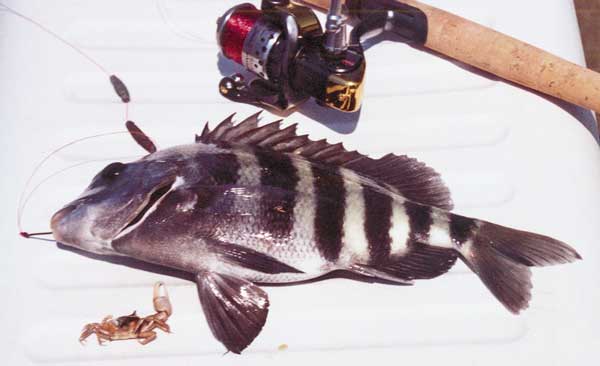
Sheepshead are an often-overlooked but great inshore species — if you get the feel for them.
Sheepshead fishing is excellent along the entire South Carolina coast throughout the summer and fall.
Sheepshead are highly sought-after, spirited battlers that are often found in big numbers and hefty sizes. They will sometimes congregate in huge numbers in small areas, providing sensational fishing.
Mike Cox of Awendaw has been sheepshead fishing most of his life. The areas around Charleston Harbor, south to the Folly River and north to Bulls Bay, are his prime sheepshead fishing territories. According to Cox, finding sheepshead is only part of the fun and challenge of this sporty saltwater fish.
“Sheepshead fishing reminds a lot of freshwater bream fishing,” Cox said. “They are plentiful … they orient to specific types of cover and structure, and they can be found grouped up in big numbers. Plus, for their size, they put up an outstanding fight on a rod and reel.”
Cox said the similarity in how these fish bite is a big difference between them.
“I love to take fishermen fishing for sheepshead for their very first time,” Cox said. “The sheepshead has a very subtle bite for such a strong fish. The very best bait I’ve found are chinaback fiddler crabs. Sheepshead are well suited with their teeth to crush the fiddler and inhale the guts of the crab, often without the angler knowing they’ve had a bite.”
On a recent trip with his grandson, Dakota Deaton of Charleston, Cox gave the youngster a lesson perfect for anyone fishing for sheepshead for the first time.
“You’ve got to set the hook just before the fish bites,” Cox said. “I realize that’s not totally realistic, but it’s the best way I can communicate how light the bite usually is. Typically, there will be just a very gentle tug on the tip of the rod, actually just a heavy feeling, more so than an actual bite.”
Cox touched the tip of Dakota’s rod and pressed it down very gently, giving the 12-year-old a real indication of what he’s trying to feel.
“When that heavy feeling on the rod tip first occurs, you’d better be setting the hook right then or you’ll be reeling in an empty hook or just the shell of a fiddler crab with the guts gone,” Cox said.
It took Dakota several tries, but he got the hang of it and was hooking up on a regular basis. He was certainly hooking them as well as anyone in the boat that day.
“You can get your feelings hurt sheepshead fishing,” Cox said. “It’s a sport where everyone misses a lot of the bites. But stick with it, and you’ll get the feel for it. The good news is that there’s usually plenty of fish around to give you lots of hook-setting opportunities.”
Chuck Robinson, who lives next door to Cox, is another veteran sheepshead fisherman. He keeps up with a lot of fishing news and enjoys fishing for what he refers to as his “fun” fish.
“Sheepshead is a favorite fish of mine for several reasons,” Robinson said. “First, they’re fun to fish for and fun to catch. In addition to all the sporting qualities, they are also outstanding table fare. There’s almost no limit to ways you can cook and eat these fish.”
“But I really enjoy fishing for them because there’s a lot of different types of places they can be found throughout the summer and fall,” he said. “Almost any type of permanent structure has the potential to attract and hold sheepshead. If a fisherman has a good gameplan and is persistent, sheepshead are a species you can usually figure out and bring home a really good catch. Plus, you do not need a lot of fancy equipment to be successful. Freshwater fishing tackle is just right, so many freshwater fishermen I know also regularly fish for sheepshead.”
Robinson said that boat docks, wooden pilings, rocks around bridges, underwater rockpiles and even sunken boats or other debris are all potentially excellent sheepshead hotspots.
“The exact location of a sheepshead may change daily,” Robinson said. “The depth these fish are caught is usually driven by the tide and the cover and structure that attracts them. I’ve found that even in hot weather, up until late in the fall, you may find them quite shallow. But if the cover and structure are appropriate, they’ll also hold deep on sunken debris as well.”
Cox said that, in addition to typical spots found along the Intracoastal Waterway and in the feeder creeks and rivers, there are other excellent sheepshead hotpots as well.
“Probably my favorite anytime of the year from spring through fall are the jetties in the Charleston Harbor,” Cox said. “Both the north and south jetties will produce excellent results, although I generally prefer the north jetties.”
“There is excellent fishing around many of the nearshore reefs as well,” he added. “Many (people) will fish these places for spadefish and other species and never realize that there are often scads of sheepshead just off the bottom along the sunken wrecks and debris. You do need to anchor right over one of the sunken wrecks to be successful. But with a graph, that’s not a big problem, as long as you can figure the tide and know where to anchor.”
Although sheepshead can be found in many places, Cox and Robinson said that knowing how to fish for them at different stages of the tide is crucial.
“When fishing the jetties, the stage of the tide is everything,” Cox said. “Whether the tide is high or low, you can catch fish, but the hotspots will change.”
Cox said that for about an hour on either side of the high tide, he usually likes to fish places where the water is actually crashing over the top of the jetties. The wave action will keep things stirred up to the point the fish will have plenty to eat. It puts them in a real feeding mode, he said.
“There will be places along the jetties that are just at the right level where the water will be crashing over the rocks,” he said. “Anchor the boat so you can fish right in these areas. There are a couple of different ways to fish in this situation. One is to tightline straight down and get into the holes between the rocks. I’ll use a 1/0 hook with about quarter- to half-ounce of weight if the current is strong. More or less weight may be needed depending on how hard the tide is pulling. You need enough weight to maintain the feel with the bait, or the fish will steal your bait every time.”
“When you feel the heavy feeling, set the hook,” he said. “Many times you can catch a bunch of fish from the same spot. It’s almost like a bream bed in that way. But when the action slows, move around the boat, dropping the rig into different spots. Sometimes another half-dozen big sheepshead can be caught by simply moving to the other side of the boat.”
Another trick Cox suggests is to use less weight and cast the fiddler crab away from the boat and let it bump along the bottom.
“This method requires a bit more touch,” he said. “It does allow you to cover much more territory without having to move and re-anchor the boat. First, you need to be able to manipulate the rigs just across the rocks so it doesn’t snag too often. Some snags and hang-up will be unavoidable. Plus, you have to be ultra sensitive to a bite from a sheepshead. My philosophy is, when in doubt if you’ve had a bite, set the hook. Hooksets are free, and it’s surprising how often a sheepshead will be hooked up.”
From mid-tide down to low tide, Cox will focus on the bottom of the jetties where the rocks meet the clean bottom. He’ll still fish in the holes created by the piled-up boulders, but the bottom where the rocks end and the flat begins is a real sweet spot.
“The lower the tide gets, the more likely it seems we’ll find the fish right along the break from the bottom of the jetty and the harbor floor. They work along this area regularly, and if there’s a fiddler crab down there, they’re probably going to bite it.”
Cox said that another exciting and fun way to catch these fish is to actually get out onto the jetties and ease along the rocks.
“My favorite way to catch sheepshead is to walk the rocks using a long Calcutta pole,” Cox said. “It’s rigged with 30- pound test line, a 1/0 hook with appropriate weight and a fiddler crab. You certainly have to be careful while walking along the jetty rocks, but you can drop that rig right into holes that are often loaded with big sheepshead. If someone is looking for some great fun and a huge challenge, hook into a 5-or 6-pound sheepshead with this rig. If that doesn’t make a sheepshead addict out of them, nothing will.”
Cox said that in recent years, the long fiberglass poles on the market, especially the 16-foot models, will work very well too.
“I’ll use these long poles from the boat during the slack-tide periods,” he said. “When the tide is dead high or low and the current slacks off, you can use the pole from a boat, even using a float to reach out and fish a wide swath from where the boat is anchored. With the very light tip on these poles, you don’t even have to worry about feeling a bite. Just watch the tip of the pole. A sheepshead will just gently pull it down. When it does, rear back on the pole, and you’re hooked into a wild ride.”
Robinson said that the same basic tactics work on many of the places he fishes that are not in the harbor.
“Rockpiles along the waterway are always a good bet for sheepshead,” Robinson said. “Sometimes you’ll find these places along the bridges over the waterway or in the larger creeks or rivers. Sometimes you can use a trolling motor if the tide isn’t too strong and work along the area, fishing vertically or casting your bait along the edge of the pilings or rocks. When you hook up with a sheepshead or two, you can drop anchor and often catch a bunch of fish.”
“There are some areas where a number of boat docks will be found in close proximity,” he said. “Most of them have wooden pilings, plus, the shade from the dock adds to the good fishing situation. Work all along these poles, and even fish under the dock if there’s enough water depth.
“I prefer the docks that are in deep-enough water to have some water around them all the time. Occasionally, you’ll find a lot of fish in one place. But even if I catch a couple of fish on one spot and a few on the next, it doesn’t take long to get a lot of sheepshead in the boat.”
While baits such as shrimp will produce sheepshead action, both Cox and Robinson strictly fish with fiddler crabs. You can target sheepshead better with the fiddlers. Cox said if you use shrimp, scads of other fish will usually bite before a sheepshead get a chance.
Cox and Robinson prefer to catch their own fiddlers, but some bait and tackle shops around Charleston sell them. If you’ve never fished for sheepshead and never caught fiddlers for bait this may be the best way to get started. Odds are good you’ll want to give this sport a try.
“Once someone learns to catch sheepshead and realizes how much fun it is, they’ll be out there chasing fiddler crabs with us,” Cox said.
Sheepshead are managed by the S.C. Department of Natural Resources with a 20-fish daily limit, but no minimum length restriction.
If you are fishing for multiple species along with sheepshead, the rules get more complicated. If catching sheepshead along with spadefish, there is a limit of 20 in aggregate, and this total will includes other fish as well. To be on the safe side, Robinson suggests reading the SCDNR regulations book carefully.
Cox added was that late-summer and fall sheepshead fishing is usually accomplished without a lot of competition.
“Deer season is in, and school’s in session,” he said. “It is a great time to be on the water, enjoy the slightly cooler weather without the boat traffic associated with summertime.”

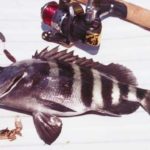
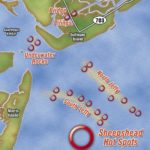
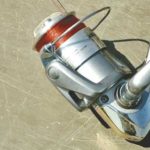
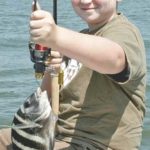
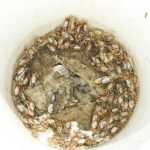
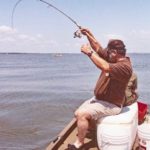
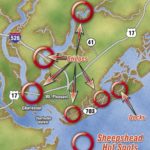



Be the first to comment